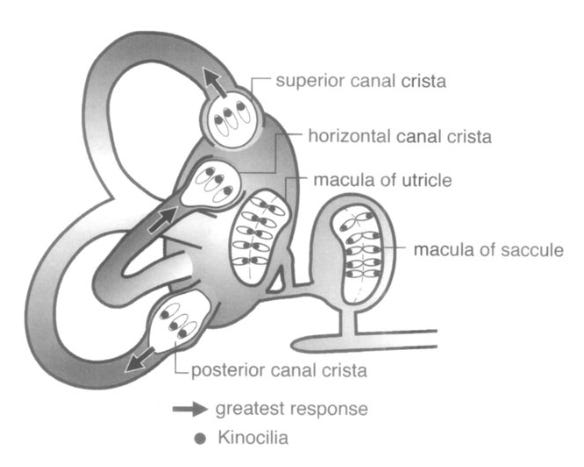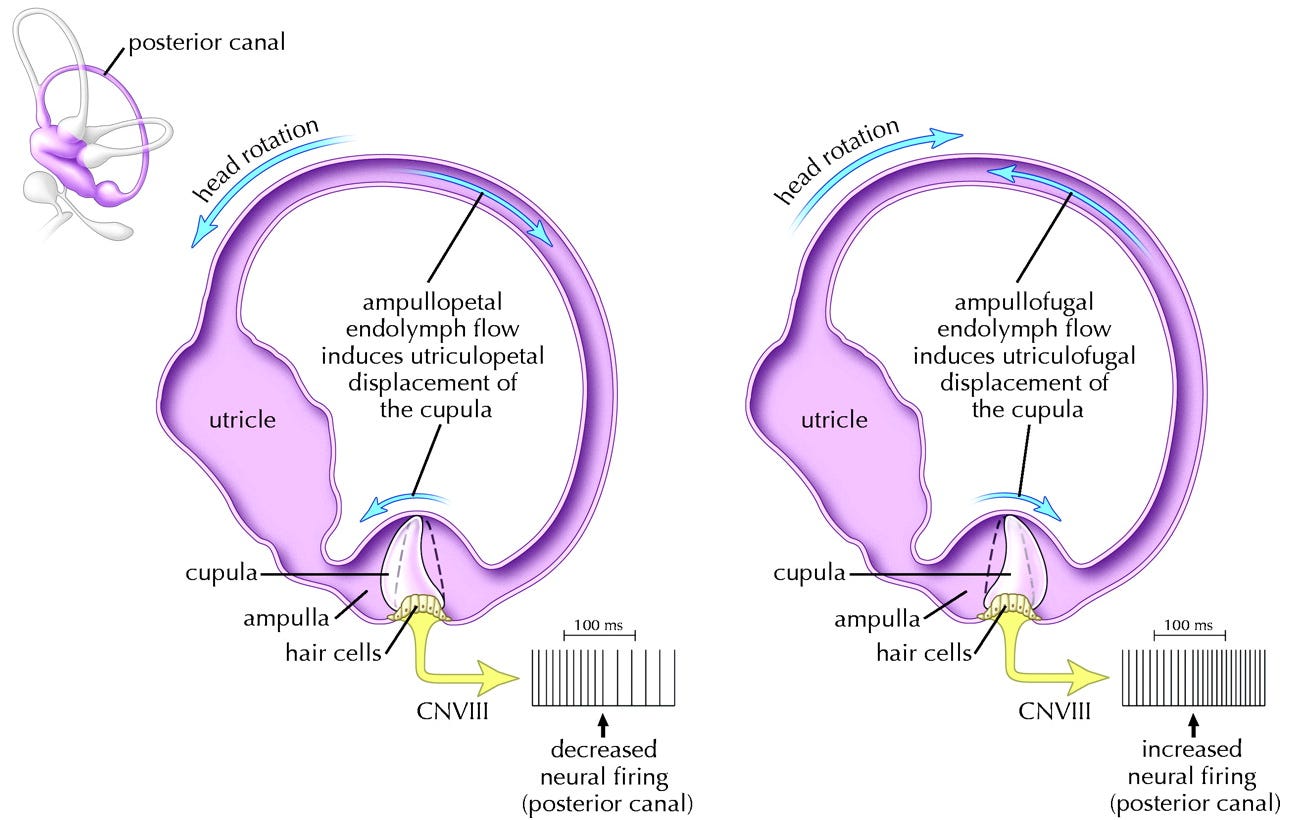Ewald's Laws: Deciphering the Dance of Balance and Vision and Guiding Clinical Practice
In the late 19th century, the German physiologist Ernst Julius Richard Ewald embarked on a pioneering journey to unravel the mysteries of the vestibular system – the intricate sensory mechanism responsible for our sense of balance and spatial orientation. Through meticulous experiments on pigeons, Ewald unveiled fundamental principles that govern the relationship between fluid movement within the inner ear and our perception of motion, ultimately formulating what we now know as 'Ewald's Laws.'
Ewald's Experiments: A Glimpse into the Inner Workings
Ewald's ingenious experiments involved stimulating the semicircular canals of pigeons and carefully observing the resulting eye movements (nystagmus) and postural adjustments. By manipulating the direction and intensity of fluid flow (endolymph) within the canals, he decoded the intricate link between these stimuli and our perception of motion.
Ewald's Laws: Unveiling the Principles of Vestibular Function and Clinical Relevance
Ewald's findings crystallized into three fundamental laws, now revered as the cornerstones of vestibular physiology:
Ewald's First Law: The Dance of the Eyes and Head
Ewald's First Law elegantly describes the intimate relationship between the plane of head rotation and the resulting direction of nystagmus (involuntary eye movements). It states that the axis of nystagmus aligns with the plane of the stimulated semicircular canal. This means that the direction of eye movement mirrors the plane of head rotation detected by a specific canal.
Horizontal Canal (Lateral Canal - Yaw): When the head rotates horizontally, like shaking your head, "no," the horizontal semicircular canal is stimulated. The resulting nystagmus is in the horizontal plane, with the eyes moving side to side.
Anterior Canal (Superior Canal - Pitch): A diagonal nod of the head, as if saying "yes" at an angle, activates the anterior semicircular canal. This triggers nystagmus in the vertical plane, with the eyes moving up and down.
Posterior Canal (Inferior Canal - Roll): Tilting the head backward and to the side engages the posterior semicircular canal. This primarily results in torsional nystagmus, with the top of the eye rotating towards the lower ear on the side the head is tilted towards. There may also be a slight vertical component to the nystagmus.
Clinical Significance of Ewald's First Law:
Ewald's First Law is a crucial guide in diagnosing peripheral nervous system (PNS) vestibulopathies, a broad spectrum of disorders affecting the vestibular system. By observing the direction and characteristics of nystagmus during clinical assessments like the BPPV tests (i.e., Dix-Hallpike, 1/2 Hallpike, Supine Head Hanging Positional Test, Supine Head Roll Test), head impulse test, or caloric testing, clinicians can identify the specific canal(s) involved, leading to a more accurate diagnosis and targeted treatment approach.
Ewald's Second Law: Asymmetry in the Horizontal Canal
In the horizontal canal, endolymph flow towards the ampulla (ampullopetal flow) elicits a more robust response than flow away from it (ampullofugal flow). This asymmetry is due to the unique orientation of hair cells within the ampulla, where the taller stereocilia face the kinocilium from the canal to the ampulla. Ampullopetal flow deflects the cupula (a gelatinous structure housing the hair cells) and bends the stereocilia towards the kinocilium, triggering increased neural firing and a heightened response. Ampullofugal flow produces the opposite effect, reducing the neural firing of the hair cells.
Ewald's Third Law: Asymmetry in the Vertical Canals
In the vertical canals (anterior and posterior), endolymph flow away from the ampulla (ampullofugal flow) generates a more robust response than flow towards it (ampullopetal flow). This principle mirrors Ewald's Second Law but arises from the opposite orientation of hair cells in the vertical canals. Here, the taller stereocilia face away from the kinocilium, resulting in a more robust response to ampullofugal flow. Therefore, ampullopetal flow is an inhibitory response due to the reduced neural firing.
The Enduring Legacy of Ewald's Laws in Clinical Practice
Ewald's Laws continue to illuminate our understanding of the vestibular system and its pivotal role in maintaining balance and spatial awareness. Their application extends far beyond theoretical knowledge, providing a practical framework for clinical assessment and treatment of vestibular disorders. From diagnosing Benign Paroxysmal Positional Vertigo (BPPV) and guiding canalith repositioning maneuvers to designing personalized vestibular rehabilitation exercise programs, Ewald's Laws remain indispensable tools in the hands of healthcare professionals dedicated to restoring balance and improving quality of life for individuals with vestibular dysfunction.
References
https://de.wikipedia.org/wiki/Ernst_Ewald
https://www.researchgate.net/publication/8260949_Horizontal_Canal_Benign_Positional_Vertigo
https://www.cmaj.ca/content/169/7/681




